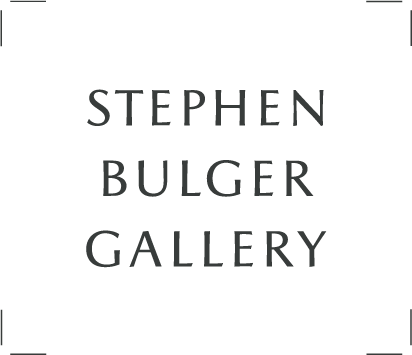Exhibition Dates: June 14 – August 2, 2008
The gallery’s first exhibition as representative for the Estate of Robert Giard (American, 1939-2002) will feature a key selection of vintage works from three genres. Giard’s photographic career is best known for his broad survey of contemporary American gay and lesbian literary figures over the course of two decades. Giard came relatively late to the practice of photography. He received a B.A. in English literature from Yale and a M.A. in Comparative Literature from Boston University. For a time, he taught intermediate grades at the New Lincoln School in New York City. By 1972, entirely self-taught, he began to photograph, concentrating on landscapes of the South Fork of Long Island, portraits of friends, many of them artists and writers in the region, and the nude figure.
Giard’s earliest landscape work eschewed a romantic view, choosing to photograph during the late autumn, winter, and early spring when many of the fashionable houses of "The Hamptons" were boarded up for the season. With the region largely depopulated, the surrounding grounds assumed for him "a mysterious, even somewhat sinister air." Among many notable images are twenty-four photographs made at The Creeks, the estate of artist Alfonso Ossorio.
All of Giard’s work was made with similar intent. His studies of the male and female nude are less a classical and idealizing rendering of form than they are a description of a specific person. Giard saw this as subsuming "the nude under the heading of the portrait. Rather than being examples of ‘the Nude,’ they are pictures of people who are naked.”
Ultimately, it would be in the area of the portrait that Giard’s career made its most indelible mark. In 1985, after seeing a performance of Larry Kramer’s The Normal Heart, which dealt with the crisis of AIDS in the gay community, Giard was moved by a sense of urgency. He decided that he would put his talents as a photographer to use for the gay and lesbian community "by recording something of note about our experience, our history, and our culture." Synthesizing his life-long interest in literature and his interest and involvement in gay issues, Giard set about documenting in straightforward, unadorned, yet sometimes witty and playful portraits, a wide survey of significant literary figures, and brash new writers on the scene.
![Robert Giard Allen Ginsberg with his own portrait of Burroughs, 1986 Titled, and dated, in pencil, au verso Estate stamp, in ink, au verso, with signature of Jonathan G. Silin Estate Accession #0370e [GLW] Provenance: Direct from the Estate of Robert Giard, New York Printed circa 1986 image on 16 x 20 inch (40.64 x 50.80 cm) Gelatin silver paper 14 1/8 x 14 1/8 in 35.88 x 35.88 cm](https://artlogic-res.cloudinary.com/w_640,h_640,c_limit,f_auto,fl_lossy/ws-stephenbulger/usr/exhibitions/images/exhibitions/112/9e00ef5835e8865f2d2d0f53e5f66f6cj.jpeg)

